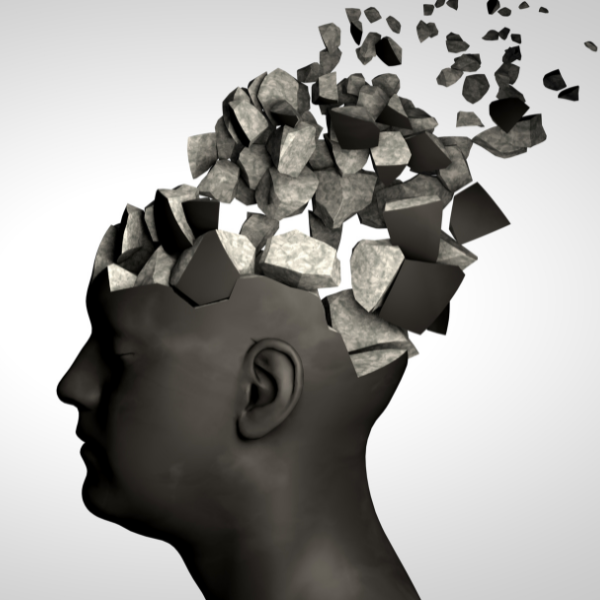All about PTSD: Understanding the Brain’s response to Trauma
- GIIS Med & Vet Club
- May 25, 2023
- 3 min read
By Dikshitha Ram

Posttraumatic Stress Disorder or PTSD is a mental health condition that is a result of horrifying, tormenting and traumatic events that are either endured or observed by a particular individual. People who have experienced traumatic events tend to have intrusive memories, flashbacks and nightmares. The persistence of these symptoms in an individual can cause depression and anxiety, instilling fear and vulnerability.
PTSD involves three main brain structures which are the prefrontal cortex, amygdala and the hippocampus. The amygdala assesses the stress levels in our body and constantly monitors dangerous situations and makes important decisions on when to react. The various images, sounds and smells of perilous and traumatic memories are stored here in the amygdala. When the brain detects situations where the sights, smell or locations seem similar to the traumatic incident, it sends out alert signals to the body, preparing it for ‘fight or flight’ response. This is why people suffering from PTSD are often startled or frightened in certain situations. The hippocampus on the other hand acts as a memory store, storing and retrieving all memories from childhood. Lastly, the prefrontal cortex of the brain is responsible for regulating impulsive thoughts and is responsible in ensuring rational thoughts and decision making to prevent one from acting solely on their emotions. In a person suffering from PTSD, the nerve circuits that connect these three brain structures do not function as they’re supposed to. This results in a wide range of symptoms.
Patients suffering from PTSD don’t necessarily face symptoms exactly after a traumatic event. At times, these symptoms tend to appear years after the event. These symptoms are broadly categorised as intrusive memories, negative changes in behaviour and mood, persistent avoidance and rapid changes in physical and emotional reactions.
Intrusive memories refer to recurrent memories, distressing thoughts of the event or the time leading up to the event. These memories could also be in the form of flashbacks and the individual may hallucinate and believe that they’re reliving the traumatic incident again. Additionally, the individual may experience distressing nightmares and may react in an extremely emotional manner when encountering someone or something that reminds them of the particular traumatic event. To cope with the traumatic incident experienced, the individual’s brain may develop an avoidance towards it and would attempt to avoid any places and people that would potentially remind them of it. Moreover, the individual may be subjected to feelings of failure, developing a negative view of oneself, feeling emotionally numb and having great difficulty to experience and express positive emotions.
The symptoms of PTSD can be severe leading to suicidal thoughts and hence it is crucial to diagnose and treat it in its initial stages. There are a variety of treatments when it comes to combatting PTSD. These include psychotherapy as well as medications. The initial stage of treatment involves the Cognitive Processing Therapy which allows the individual to examine their thoughts on the trauma and figure out ways to live with it. To treat the persistent avoidance that arises from PTSD, Prolonged Exposure Therapy is conducted. The therapist would help the individual with breathing techniques to deal with anxiety and they would be encouraged to face the things that they’ve developed an avoidance to, one by one. Other processes such as eye movement reprocessing and stress inoculation training have also been used to provide effective outcomes. Since there is no pill to treat PTSD, medication consists of a number of interventions meant to alleviate the symptoms. A hormone-based medication called hydrocortisone is given to the patient immediately after the traumatic incident to reduce the risk of developing PTSD.
It is important to increase awareness on the science behind PTSD to reduce obstacles to care and increase the number of people suffering from trauma who are willing to get the help they need to recover.
Bibliography:
“6 Common Treatments for PTSD (Post-Traumatic Stress Disorder).” WebMD, WebMD, https://www.webmd.com/mental-health/what-are-treatments-for-posttraumatic-stress disorder.
“DCoE Director Explains Science Behind PTSD | BrainLine.” BrainLine, 29 May 2019, www.brainline.org/article/dcoe-director-explains-science-behind-ptsd.
VA.gov | Veterans Affairs. www.ptsd.va.gov/professional/treat/specific/ptsd_child_teens.asp.
Posttraumatic Stress Disorder (PTSD) | Anxiety and Depression Association of America, ADAA. adaa.org/understanding-anxiety/posttraumatic-stress-disorder-ptsd.





Comments